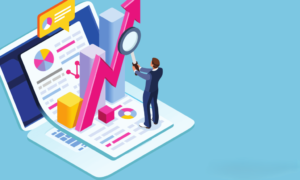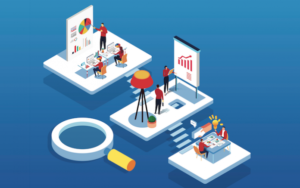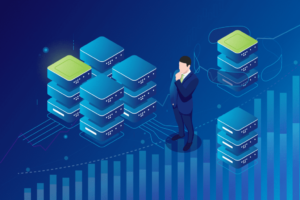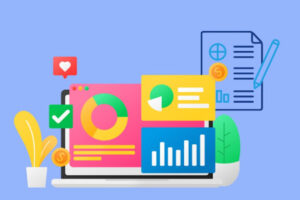Data is everywhere. In today’s world, it’s more important than ever to understand data analysis methodology. Whether you work in business, marketing, finance, or research, data plays a significant role in your life. Having the right data analysis tools to help you make decisions, spot trends, and drive growth can significantly boost your career. As 2024 approaches, many tools have become more powerful, easier to use, and capable of handling larger datasets. In this blog, we’ll explore the nine best data analysis tools to consider in 2024, whether you’re a seasoned data analyst or just starting your career.
1. Microsoft Power BI as a Data Analysis Tool
Microsoft Power BI is a powerful data analysis tool, integrating seamlessly with other Microsoft products to help users transform raw data into interactive dashboards and reports. Its data analysis methodology, including AI insights and real-time data monitoring.
Why It’s a Top Tool
However, it remains one of the most widely used data analysis tools today. A key reason for this is its integration with other Microsoft products. For example, Microsoft Power BI (originally called Office Desktop Analytics) is part of Microsoft’s Power Platform, which also includes Power Apps and Power View. Power BI is a suite of self-service tools that work with spreadsheets and enable users to transform raw data into interactive dashboards and reports, with the ability to share all data visualisations across an organisation.
Key Features:

- Interactive dashboards: Create beautiful, interactive dashboards that can be sent to teams or embedded in an app.
- Data Connectivity: Connect to Excel, SQL Server, and cloud-based sources, including Azure.
- AI Insights: Use AI-assisted automation to help you make sense of your data by preparing it, identifying trends, and forecasting what’s likely to come next.
- Real-time Data: Keep your finger on the pulse by monitoring data in real time to make timely decisions based on the most recent information.
Best For:
Business analysts, data professionals, and anyone seeking a complete and in-depth data analysis tool for data visualisation and reporting.
2. Tableau
Tableau is a powerful data visualisation tool favoured by analysts, offering real-time analysis, diverse visualisation options, and strong community support, making it ideal for implementing data analysis methodology.
Why It’s a Top Tool
Tableau is a leading data visualisation tool designed for real-time, interactive analysis of large datasets. It’s a favourite among data analysts and business intelligence professionals.
Key Features:
- Intuitive interface: No coding required. Drag and drop to create charts, graphs, or dashboards that interact with other data.
- Extensive visualisation types: Includes a wide range of visualisation options, such as heat maps, scatter plots, and geographic maps.
- Live data connectivity: Connect to live data sources and update visualisations in real-time.
- Massive community support: Tableau boasts a large and active community where users collaborate, and share resources, tutorials, and forums.
Data Analysis Methodology Best For:
Data analysts, business intelligence professionals, or anyone who needs powerful data visualisation capabilities.
3. R Programming Language
R is a powerful programming language for statistical analysis and data visualisation, widely used for advanced data analysis methodology in research, academia, and industry.
Why It’s a Top Data Analysis Tool
R is a programming language and environment for statistical analysis and data visualisation. It’s widely used in academia, research, and industry for tasks involving statistical data analysis.
Key Features:

- Generalised statistical analysis: An extensive selection of statistical and modelling techniques, including linear and nonlinear modelling, time-series analysis, and clustering.
- Data manipulation: Use libraries like dplyr and tidyverse for efficient data manipulation and cleaning.
- Rich visualisation libraries: Create detailed and customisable visualisations with packages like ggplot2 and plotly.
- Extensibility: As R is open-source, it can be extended with custom packages and functions.
Best For:
Statisticians, researchers, data scientists, and anyone needing advanced statistical analysis tools.
4. Python with Pandas
Python, with its powerful Pandas library, is an ideal data analysis tool for data science methodology, offering seamless integration with other libraries and scalability for handling large datasets.
Why It’s a Top Data Analysis Tool
Python, along with its data analysis library Pandas, is an ideal tool for data analysis. Python is simple and readable, while Pandas excels in data manipulation.
Key Features:
- Data crunching: Pandas is built with flexible and efficient data structures and operations, including labelled statistical series and data frames.
- Integration with other libraries: Many Python libraries integrate seamlessly, such as NumPy for numerical computations, Matplotlib and Seaborn for visualisations, and SciPy for scientific computing.
- Large community and resources: Python boasts a large community with numerous tutorials, documentation, and forums.
- Scalability: Python is suitable for handling large datasets and performing complex data operations.
Best For:
Data scientists, data engineers, and developers need a powerful, general-purpose tool for big-data analysis.
Learn more about Data Analysis Tools Through this Foundations of Data Analysis Course→
5. Apache Spark
Apache Spark is an open-source distributed system ideal for big data processing, offering high-speed in-memory processing and scalability for large-scale data analysis methodology across multiple nodes.
Why It’s a Top Tool
Apache Spark is an open-source distributed processing system that provides an easy API for big data processing. It offers functionality for large-scale data processing across multiple computing nodes.
Key Features:

- In-memory processing: Process data in memory, significantly increasing the speed of data analysis tasks.
- Scalability: Capable of handling massive datasets across distributed clusters.
- Stream processing: Supports real-time data processing, making it ideal for time-sensitive applications.
- Integration with big data tools: Works well with Hadoop, HDFS, and other big data ecosystems.
Best For:
Big data analysts, data engineers, and organisations dealing with large-scale data analytics.
6. Google Data Studio
Google Data Studio is a free, user-friendly data analysis tool for creating interactive dashboards and reports, ideal for applying data analysis methodology with real-time collaboration and integration with Google services.
Why It’s a Top Tool
Google Data Studio is a free, web-based data analysis tool for creating interactive and shareable dashboards and reports. It integrates seamlessly with data from Google services such as Google Analytics, Google Ads, and Google Sheets.
Key Features:
- Google Play Services Integration: Works with Google Analytics, Google Ads, Google Sheets, and other Google products.
- Customisable reports: Create interactive reports and dashboards that can be shared with clients or teams.
- Real-time collaboration: Multiple users can work on the same report simultaneously – perfect for teams.
- User-friendly interface: Drag-and-drop functionality makes it easy to create and customise visualisations.
Best For:
Digital marketers, small business owners, or teams in need of a cost-free reporting tool.
7. SAS (Statistical Analysis System)
SAS is an advanced analytics software suite used for statistical analysis, predictive modelling, and data management, ideal for organisations in highly regulated industries.
Why It’s a Top Tool
SAS is an enterprise software suite developed by the US software giant SAS Institute for advanced analytics, multivariate analysis, business intelligence, and data management. SAS is widely used in the financial sector, as well as in government and healthcare.
Key Features:

- Sophisticated statistical analysis: An integrated toolset of statistical functions for descriptive and inferential analysis of data.
- Data integration: Easily integrates with other data sources and platforms, and is scalable for large organisations.
- Built-in predictive analytics: Tools for predictive modelling and machine learning that help users unlock insights from historical data.
- Robust security: Includes strong data security features, making it suitable for sensitive or regulated industries.
Best For:
Data analysts, statisticians, and organisations in highly regulated industries needing advanced analytics.
8. Alteryx
Alteryx is a no-code data analytics platform that enables users to blend, prepare, and analyse data from multiple sources, making it ideal for implementing data analysis methodology in a collaborative, user-friendly environment.
Why It’s a Top Tool
Alteryx is a self-service data analytics platform that enables users to prepare, blend, and analyse data from various sources. Its intuitive visual interface and powerful data blending capabilities make it a popular tool among data analysts and business users.
Key Features:
- No-code data preparation: Users can cleanse, blend, and prepare data without writing any code.
- Support for a broad set of data connectors: Connects to a wide range of data sources, from cloud services and databases to raw sensor data streams, emails, spreadsheets, and more.
- Advanced analytics: Includes tools for predictive analytics, spatial analysis, and statistical modelling.
- Collaboration and sharing: Easily share insights and data workflows with team members and stakeholders.
Best For:
Data analysts, business analysts, and organisations seeking a no-code data analytics solution. It is particularly beneficial for those wanting to quickly create reliable graphical analytics charts and reports.
9. Qlik Sense
Qlik Sense is a powerful self-service analytics tool that uses an associative data model for data visualisation and exploration, ideal for business analysts and data professionals.
Why It’s a Top Tool
Qlik Sense is a powerful software tool used for data visualisation and business intelligence. It features a unique associative data model that enables the visualisation and exploration of data to provide insights from various perspectives.
Key Features:

- Associative data model: A natural way to explore and query data, allowing users to discover hidden insights and relationships easily.
- Self-service analytics: Users can create their own visualisations and reports without needing help from IT.
- Responsive design: Dashboards are automatically optimised for any device, from desktops to tablets to smartphones.
- Data governance: Offers robust data governance features to ensure data accuracy and compliance.
Best For:
Business analysts, data professionals, and organisations seeking a powerful self-service analytics tool.
Conclusion
If you’re looking for tools to perform fast and powerful data analysis in 2024, look no further. Organisations need skilled individuals to analyse their data and want to ensure they have the best tools for the job. This blog lists some of the top tools you can use for data analysis. Whether you’re an experienced data professional or just starting out, the tools listed here will help you conduct fast, powerful data analysis.
Take an Online Level 3 Diploma in Data Analysis Course Now→
